All along, I’ve billed this as a trip to the Canadian Rockies more than a trip to Alaska. But today we really did go to the southernmost part of Alaska accessible by road. It’s a good deal south of the Yukon where made our northernmost turn around – more than 400 miles south and west of Watson Lake, YT.
We’ve been staying two nights in Stewart, British Columbia, which is just across the border from Hyder – our only two-night stay of the trip. So reasonably bright and early this morning, we headed over the border into Hyder. There’s no border control/customs for entering the US there, apparently because there is no place to go other than Hyder and the Salmon River Glacier once you get there. The road to Hyder literally doesn’t go anywhere else.

Welcome to Hyder, Alaska.
We had plans to visit three places in Alaska (in Alaska!). The first of these was the Fish Creek Wildlife Viewing Area – That’s another name for the local Bears and Eagles All-You-Can-Eat Salmon Buffet. While the board walk for humans and streams for animals and fish were all beautiful, the salmon had yet to arrive, so we saw none of the top-level predators about.

The boardwalk for viewing the bears at the Fish Creek Wildlife Viewing Area.

As the salmon hadn’t arrived yet, we saw neither bears nor eagles,but it was still beautiful.
From there, we headed up the road to see our second destination in Alaska – the Salmon River Glacier. This is about 35 kilometers of fairly good dirt road rising from near sea level up to more than 3,000 feet.

This was the view through my windshield on the way up the road to the Salmon River Glacier viewing areas.

Here’s the Salmon River itself.

I’m not certain, but I believe from the sequence on my camera that this should be the thumb of the glacier. Our first really good view of this impressive river of ice.
We knew when we set out this morning that there was a good chance we wouldn’t get to see much at the top with the clouds hanging low over the mountains. And the view into the valley didn’t give us a lot of hope.

While the clouds in the valley as we headed up the mountain were dramatic, they made us wonder if there would be anything to see at the top.
When we finally reach the top, dealing with huge amounts of dust, work trucks going to install high tension electrical wires in the area beyond the overlook, and a generally rocky, bumpy road, this is what we see:

Where’s the giant glacier? It’s hiding there in the clouds.
But then…

But then the clouds would clear for a few seconds giving us a peek at this field of ice, and then, just as quickly, the clouds would close back in. A bit later, they would open up again for another peek. You had to be attentive, but if you were, there was an amazing view.
On the ride down, my comfort level with riding on dirt roads continued to grow, though I confess a certain level of nervousness the first few kilometers riding on the valley side of the road rather than the mountain side.
When we reach the pavement, Howard and I scoot past the Bear Salmon Buffet, and headed over to the Seafood Express Bus, our third destination.
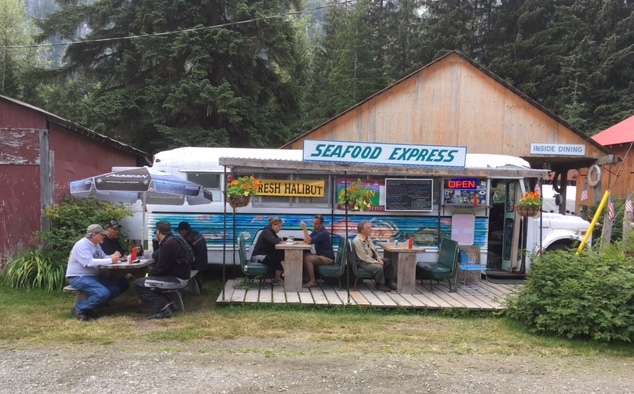
This is the legendary Seafood Express Bus serving fresh caught local seafood.
 This is a long-standing Hyder institution that is on every motorcyclist’s list of places to visit when they get to Hyder. It’s run by a family where the husband and son are commercial fishermen, and wife/mom runs the bus as sort of non-moving food truck. There actually is a bit of indoor seating to be had, along with a clean restroom featuring a purple toilet.
This is a long-standing Hyder institution that is on every motorcyclist’s list of places to visit when they get to Hyder. It’s run by a family where the husband and son are commercial fishermen, and wife/mom runs the bus as sort of non-moving food truck. There actually is a bit of indoor seating to be had, along with a clean restroom featuring a purple toilet.
But the real pleasure is to sit outside and talk with your fellow travelers while dining on smoked salmon spread served with soda crackers (absolutely amazing!), fish sandwiches, or halibut and chips, among other items.
It’s not a place to go if you are in a hurry. As the bus rules state:
- NO WORRY
- NO HURRY
- RELAX
- ENJOY!
Given the tiny kitchen, mom can only cook one or two meals at a time. So relax, don’t worry, talk to the other folks at your table, and have some great food in an unbelievable setting. Howard and I had lunch with a group of Harley riders up from Corpus Christie, Texas and had fun conversation along with our fish.
From there, it was back to the Portland Canal that is a fjord that goes all the way out to the Pacific Ocean, and is Canada’s northernmost ice-free port.

It’s not hard to imagine getting on a boat and heading out to the Pacific Ocean from here. The breeze there even feels like it’s coming from the sea.
Then it’s back to the Canadian border where the pleasant, but emphatic border agents make sure you are not planning any misbehavior during your visit to the land of the maple leaf flag. (We actually crossed back into Canada on the road to the glacier overlook, but while there was a sign noting the border, there’s no official crossing. What are you going to do? Pull out a paraglider and fly on into the country?)
And with that, Howard and I are back in Stewart, BC, getting our bikes fueled up and ready to be packed in the morning for the long, long ride home.
We still have some beautiful roads to ride, we still have some national parks to visit, and we still have to ride through my grandfather’s homestead in northwest North Dakota, but the biggest part of our adventure has come to a close.
We’ve been North to the Yukon and South to Alaska, and now we head south and east back toward Nebraska and Texas, which is still more than 2,300 miles for me, and close to 3,200 for Howard.
But don’t worry, there will still be blog posts over the days to come, so don’t go away.
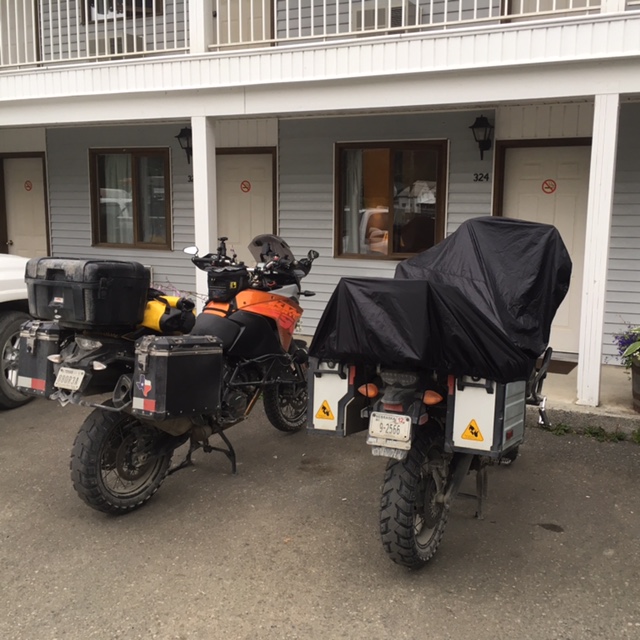











 This is a long-standing Hyder institution that is on every motorcyclist’s list of places to visit when they get to Hyder. It’s run by a family where the husband and son are commercial fishermen, and wife/mom runs the bus as sort of non-moving food truck. There actually is a bit of indoor seating to be had, along with a clean restroom featuring a purple toilet.
This is a long-standing Hyder institution that is on every motorcyclist’s list of places to visit when they get to Hyder. It’s run by a family where the husband and son are commercial fishermen, and wife/mom runs the bus as sort of non-moving food truck. There actually is a bit of indoor seating to be had, along with a clean restroom featuring a purple toilet.



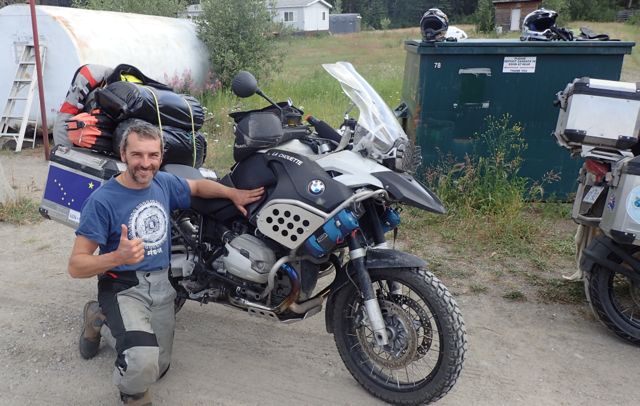

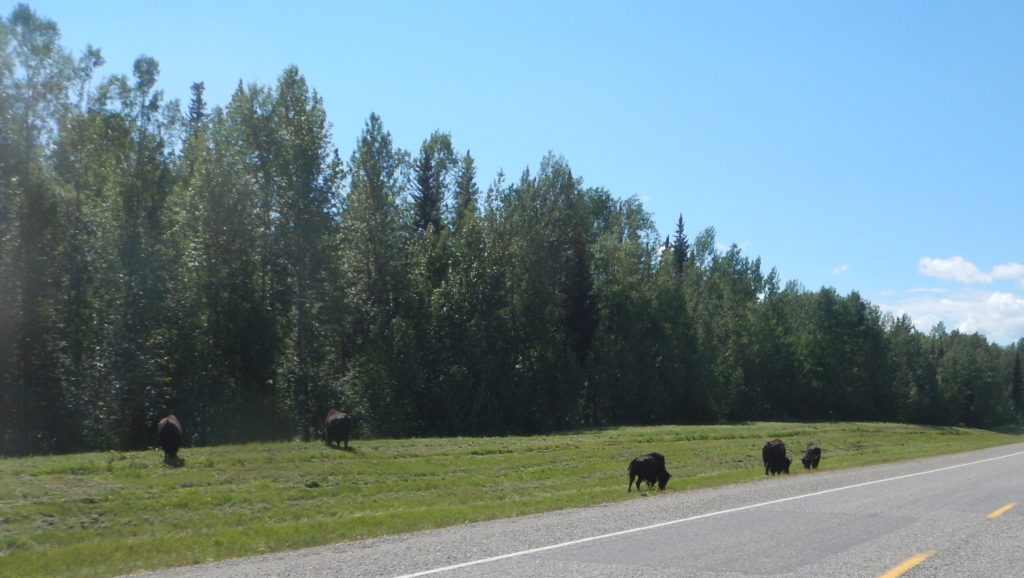











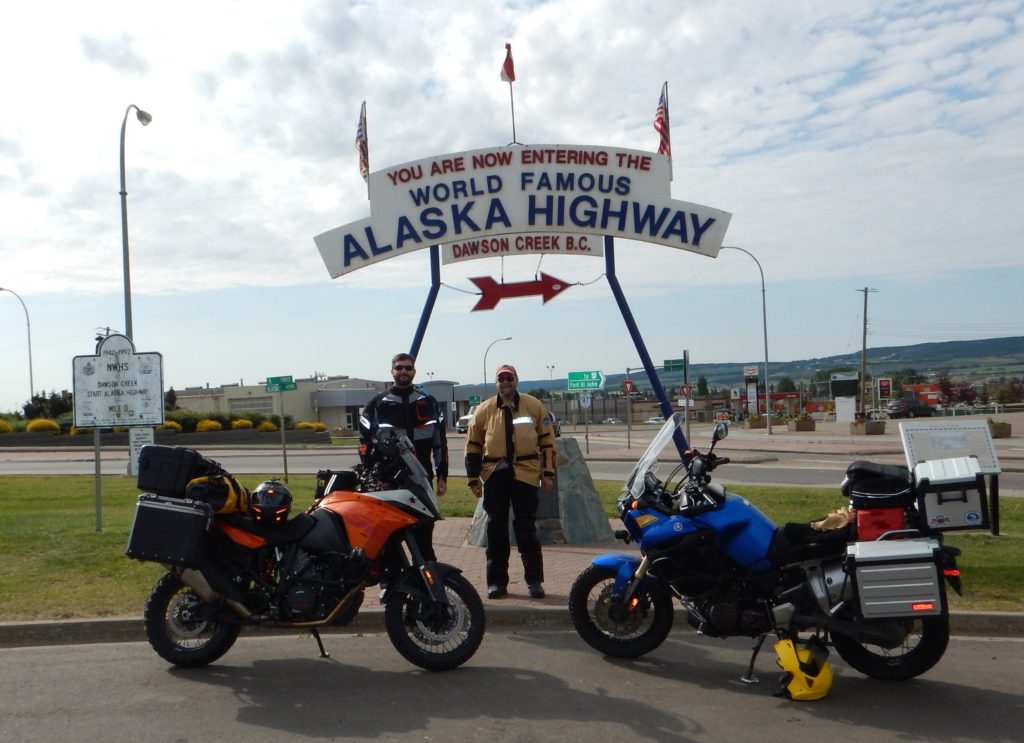
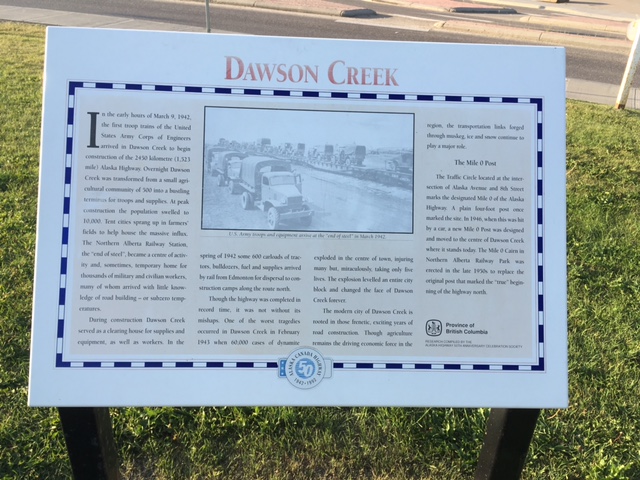





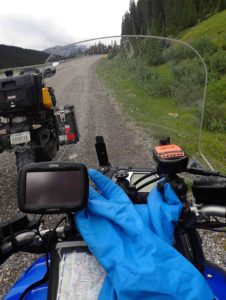 For most of our trip so far (and we are now at the finish of day three), we have had wind, rain, cold and damp in various measures each of the days. While we could have done without some of the wind, the rest have all been just part of the adventure. We’ve always managed to get stopped in time to close up the vents and get the rain gear on. Of course, not all our gear is glamorous. We rough, tough bikers use giant bus boy rubber gloves over our regular gloves to keep the rain at bay.
For most of our trip so far (and we are now at the finish of day three), we have had wind, rain, cold and damp in various measures each of the days. While we could have done without some of the wind, the rest have all been just part of the adventure. We’ve always managed to get stopped in time to close up the vents and get the rain gear on. Of course, not all our gear is glamorous. We rough, tough bikers use giant bus boy rubber gloves over our regular gloves to keep the rain at bay.






